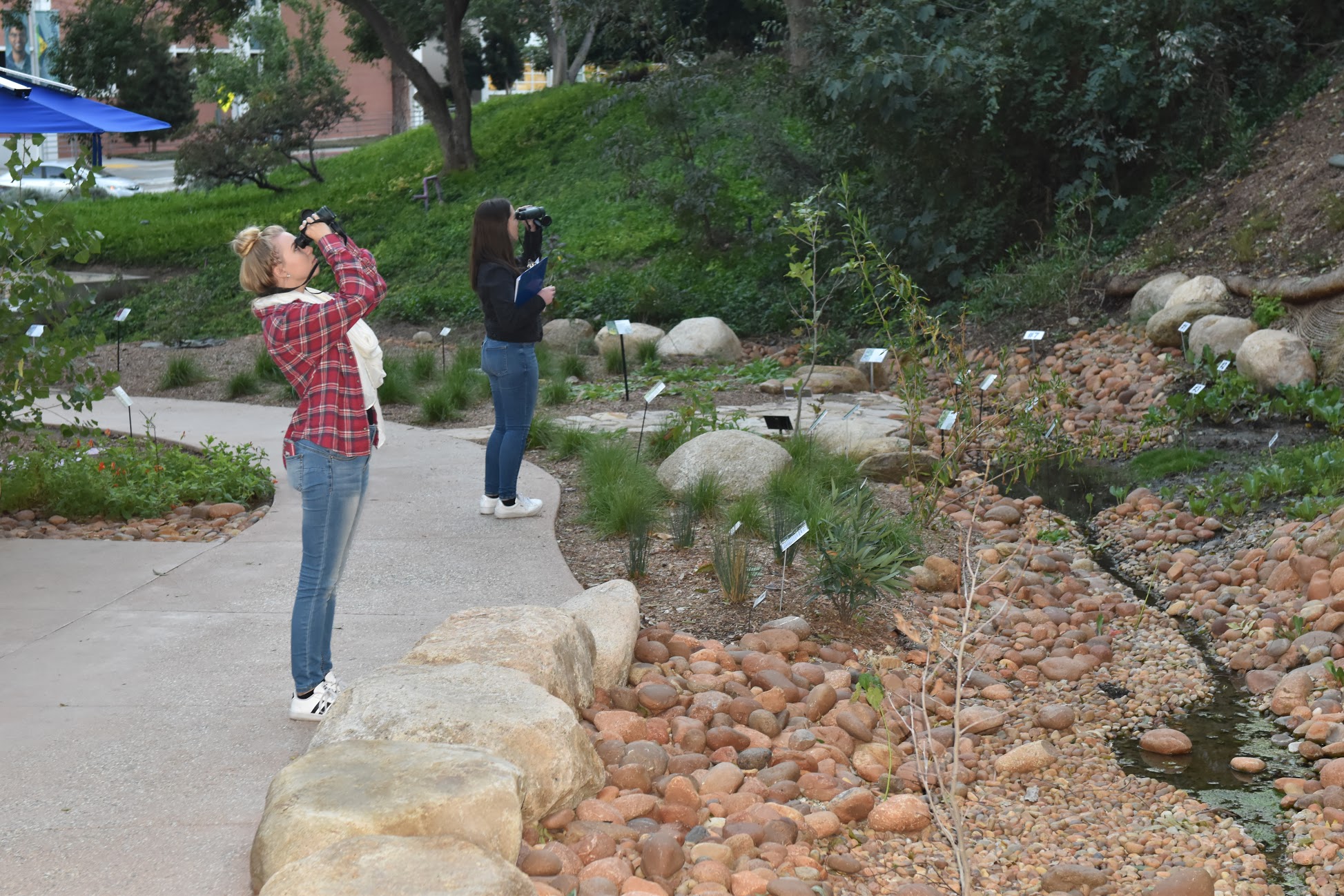Project Blue
When people think about water in Southern California, they usually think of the Pacific Ocean. Although the Pacific has a tremendous influence on our climate (cool, wet winters and warm, dry summers), is home to some of the most interesting marine organisms on the earth, and a food source for humans, it is the abundant freshwater that really allowed humans to settle the region. It is easy for people that currently live in Southern California to overlook our streams, rivers, and other natural sources of freshwater because, outside of the mountains, most now drain into concrete channels to prevent flooding, which was once a common occurrence. Also, these channels are often surrounded by fences or actually run underground. Even large rivers, like the Santa Ana and San Gabriel, have limited access. Thus, we do not have a physical connection to the water around us.

The campus of Cal Poly Pomona has several natural sources of water that make the campus an excellent habitat for animals, plants, and other organisms. Most of the water on the campus originates as springs, which are spots where water from aquifers (rock that can store water belowground), reaches the earth’s surface. The largest natural body of water on campus is Kellogg Creek, which runs through the Voorhis Ecological Reserve and ends near Building 1. Another spring is located behind the Manor House, where the President of the University lives. That spring is the source for the water in the Duck Pond adjacent to University Drive. Perhaps the most amazing group of springs on campus are located just north of Building 1 and are the focal point of Project Blue, the newest resource for BioTrek.
Project Blue was created to highlight water, not just on the campus of Cal Poly Pomona, but throughout California. Until recently, the sources of the water site and the resulting channel of water at the Project Blue site were covered by nonnative plants. Once the plants were removed, it became apparent that the water for the channel was supplied by numerous springs coming out of the hill above the channel. There are so many springs that we do not know exactly how many there are. After the plants were cleared, native riparian (wetland) plants were planted around the springs and water channel. In addition, seating in the form of a learning circle, umbrellas with solar powered charging stations, and a sidewalk to allow greater access to Project Blue. Since construction on the site was completed, the plants have grown substantially, providing food and homes for birds and insects, and the water now contains an interesting green alga, diatoms, and other microscopic organisms. The water is also utilized by bees, dragonflies, birds, coyotes, and deer. Thus, on top of being a great place to learn about riparian habitats, take your lunch, or just enjoy some quiet time, Project Blue has become a resource for a wide variety of organisms. If you have a group that would like to visit Project Blue, please contact the staff at BioTrek at biotrek@cpp.edu.